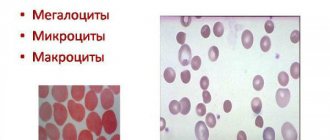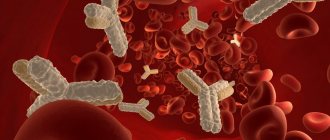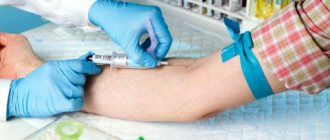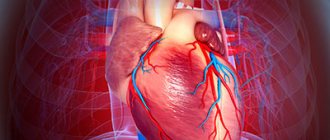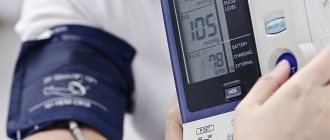Coronary angiography is the “gold standard” for diagnosing coronary heart disease. This procedure is performed to determine the extent of damage to the coronary arteries of the heart using high-quality contrast.
Coronary angiography is performed under local anesthesia (the catheter insertion site in the area of the femoral fold is numbed). The essence of the method is that a thin probe is inserted through the femoral artery, which is accessed in the area of the femoral fold, through which a catheter is inserted. The entire procedure is carried out under X-ray control. When the catheter reaches the desired level, a radiopaque substance is injected into the bloodstream and a series of x-rays are taken, which will subsequently give a complete picture of the condition of the patient’s blood vessels.
At the NT-Medicine clinic, coronary angiography is performed in a modern cath lab using the innovative third-generation angiographic system Veradius Unity (Philips), which allows obtaining high-definition images at a frequency of 30 frames per second.
Indications for coronary angiography
- examination of men aged 45–65 years and women aged 55–75 years without established cardiovascular diseases;
- an established diagnosis of coronary artery disease to clarify the degree of risk of heart attack and prognosis of the course of the disease;
- diabetes mellitus in men 45–65 years old and women 55–75 years old without established cardiovascular diseases;
- lipid metabolism disorders in patients with an established diagnosis of coronary artery disease, as an additional diagnostic test to decide on the initiation or change of drug therapy;
- chest pain of unknown etiology, episodes of arrhythmia;
- assessment of the condition of coronary stents, aortic and mammary coronary bypass grafts.
- anomalies of the development of the coronary arteries.
- ambiguous load test results.
Coronary angiography (coronary angiography - CG)
Dear patients!
At the National Medical Research Center for Cardiovascular Surgery named after. A.N. Baculeva coronary angiography on an outpatient basis is performed on a paid basis.
Cost 35,000 rubles
For more detailed information, call the multi-line phone from 9:00 to 17:00
Address: 121552, Moscow, Rublevskoye sh. 135
Coronary angiography
(coronary angiography - CG) is the “gold” standard for diagnosing coronary heart disease.
This is an invasive research method. Images of the arteries that supply the heart, the coronary arteries, are achieved by injecting them with a contrast agent through special catheters. Catheters are inserted into the heart vessels through a small puncture in the wrist or, if necessary, through the groin area. Coronary angiography provides the doctor with all the necessary information about the condition of the coronary arteries.
Considering that radial access (through the wrist) is currently used to perform coronary angiography, bed rest after the procedure is not required. The duration of the study itself is 15-20 minutes.
Hospitalization at the Center
The patient arrives at the Center on an empty stomach. After completing the documents, he is placed in the ward and examined by the attending physician. You must have blood tests with you for HIV, hepatitis and syphilis (Wassermann reaction) mdash; no more than 14 days old. In the absence of own results of instrumental examination, an electrocardiogram and ultrasound of the heart (echocardiography) are performed.
Performing coronary angiography
Immediately after this, the patient is transferred to the cath lab to perform coronary angiography. The procedure is performed under local anesthesia, as it does not create serious discomfort during execution. The patient has the opportunity to communicate with the specialist performing the procedure. To perform CG, our Center uses the most modern contrast agents (Visipak, Omnipaque, Xenetics, etc.), which minimizes the risk of allergic reactions. Novocaine is most often used to perform local anesthesia. However, if there is intolerance to any anesthetic, the latter is selected individually.
After the coronary angiography procedure
After the coronary angiography is completed, a pressure bandage is applied to the patient’s wrist, and he is transferred to the ward for rest and observation by a doctor for 2-3 hours. If during this time the patient does not have any complaints, the patient is discharged from the clinic.
Survey results
The patient receives a disc with a digital recording of coronary angiography, as well as consultation with a specialist regarding the need for further examination or treatment. In cases where, during the diagnostic procedure, a life-threatening narrowing of the coronary artery is detected, treatment (transluminal balloon angioplasty with stenting of the affected area of the vessel) is carried out immediately.
How to prepare for coronary angiography?
A prerequisite for the procedure is a preliminary consultation with a cardiologist, whose task is to determine the presence of indications or contraindications for this type of study, the need to prescribe additional diagnostic methods, prescribe corrective therapy, etc.
- The day before the test, exclude foods that provoke fermentation from the diet (juices, fresh fruits and vegetables, rye bread), and refrain from overeating. You can drink non-carbonated water in unlimited quantities, at least 1.5 liters.
- Before the study, it is necessary to warn the doctor about any chronic diseases and possible reactions to medications, allergies to iodine preparations and local anesthetics.
- On the day of the study, breakfast is excluded, but you can continue to take medications prescribed by your doctor.
- After the procedure, you need to drink plenty of fluids, at least 2 liters of water, for 6-8 hours.
Coronary angiography: to do or not to do?
Evgenia, Birsk
August 26, 2016
Hello! My husband (age 40 years, height 174 cm, weight 84 kg) 2 weeks ago was hospitalized in the therapeutic (cardiology) department due to a hypertensive crisis. Complaints: increased blood pressure 180/100, weakness, pain in the heart area radiating to the left shoulder blade, lack of air. Now they diagnose angina pectoris. (See diagnostic results below). The doctor suggests doing a coronary angiography. Now my husband is being treated in a hospital, his condition has improved slightly, there is no pain, slight weakness, and his blood pressure has returned to normal. The first few days I was out of breath, if I walked a little, now I can withstand a small load (calm walking). About 9-10 years ago I was in the hospital with similar symptoms, then they diagnosed a hypertensive crisis. During these 10 years there were slight fluctuations in blood pressure, but overall the condition was normal. Conclusion of ECHO-KG (dated August 12, 2016): Consolidation of the aorta. Hypertrophy of the left ventricular myocardium with a diffuse decrease in contractility. Dilatation of the cavities of both atria. Diastolic dysfunction of the left ventricular myocardium, type 1. Daily monitoring of ECG and blood pressure (from August 9, 2016): bradycardia during the observation period, pronounced during the day. Circadian index 113%. During the observation period, submaximal heart rate was not achieved (48% of the maximum possible for a given age). The dynamics of blood pressure are characteristic of stable isolated diastolic arterial hypotension during the daytime. The decrease in systolic and diastolic blood pressure at night is insufficient. The variability of diastolic blood pressure during the day and systolic blood pressure at night was within normal limits. The variability of systolic blood pressure during the day is higher than normal. Daily ECG monitoring (from August 16, 2016): bradycardia during the observation period, pronounced during the day. Circadian index 136%. During the observation period, submaximal heart rate was not achieved (52% of the maximum possible for a given age). Sinus rhythm, with heart rate from 32 to 101 (average 50) beats.min throughout the observation. Ventricular extrasystole grade 1 according to Ryan. Pathological supraventricular arrhythmias, uncharacteristic of healthy individuals, are recorded. Ventricular ectopic activity is within normal limits. No ischemic ECG changes were detected. No significant changes in the QT interval were detected during the observation period. Is it necessary to do coronary angiography now? It’s kind of scary, they say that this manipulation is not entirely harmless. Please advise what to do? Thank you !
The question is closed
IBS
coronary angiography
angina pectoris
No reward
Why is coronary angiography needed?
This method is the “gold standard” for choosing the optimal treatment strategy for such a terrible disease as coronary heart disease. Coronary angiography makes it possible to determine individually for each patient which treatment method is preferable: drug therapy, endovascular treatment (stenting) or cardiac surgery using venous shunts.
Planned coronary angiography is recommended:
- If you have attacks of angina pectoris or, based on the results of an examination (ECG, bicycle ergometry or treadmill, Holter monitoring, etc.), the doctor has identified signs of myocardial ischemia in you.
- If angina attacks persist despite drug treatment.
- If you have been diagnosed with atherosclerosis of peripheral arteries (arteries supplying blood to the brain, limbs, internal organs) during examination.
- If you have rhythm disturbances that may be life-threatening, or you have experienced sudden clinical death.
- If you are planning to have heart valve surgery and are over 40 years old.
- And also in some complex cases when differential diagnosis is required.
How is coronography done today?
The procedure is often performed not only in specialized cardiology centers, but also in multidisciplinary clinics. Most often, the study is planned. It would be useful for the patient to know how coronography is done:
A puncture is performed (usually the femoral artery in the groin area), through which a thin plastic catheter is inserted into the heart. A special contrast agent is injected into the catheter. It allows the doctor, using an angiograph that transmits an image on a screen, to see what is happening in the patient’s coronary vessels.
During the study, the doctor assesses the condition of the blood vessels and determines the location of narrowing. Coronography makes it possible to carefully examine each section of the vessels and draw the right conclusions. And this primarily depends on the qualifications and experience of the specialist. Ultimately, the success of treatment and, often, the life of the patient depends on how competently the doctor carries out the procedure. That is why patients should take their choice of clinic seriously and study the reviews of those for whom coronography has been left behind.
What should the patient prepare for?
Before performing a coronography, the patient is given anesthesia and other medications, and the hair in the groin area or on the arm is shaved (depending on where the catheter is placed). A small incision is then made in this area into which a plastic tube is inserted. The catheter is inserted through it. It is carefully advanced towards the heart. This progression should not be painful for the patient.
Electrodes are attached to the chest to monitor cardiac activity. The patient does not sleep during the study. At a certain stage, he may be asked to take a deep breath, change the position of his hands, or hold his breath. During the study, the patient's blood pressure and pulse are measured.
What the doctor finds during a cardiac angiography will determine whether additional interventions will need to be performed immediately, such as opening narrowed arteries with angioplasty or installing a stent.
Typically, a coronagraphy lasts about an hour, but can take longer.
After the examination is completed, the patient should remain under the supervision of doctors for at least several hours and not get up to prevent bleeding. In some cases, the patient is sent home on the same day, sometimes he has to stay at the clinic.
During the period after coronography, the patient is advised to drink plenty of fluids. The doctor will determine when you can resume taking medications, take a shower, and return to your normal life. You should not do heavy work for several days after the intervention.
Memo to a patient who has undergone cardiac surgery
Memo to a patient who has undergone cardiac surgery
After heart surgery, you may feel that you have been given another chance to prolong your life, and you will want to get the maximum results from the operation. If it was coronary bypass surgery, then it is important to change your lifestyle, for example, lose extra 5-10 kg, start regular exercise, change eating habits that lead to high cholesterol and weight gain, etc. The days ahead will not always be easy, but you must steadily move forward to regain your strength and health.
Emotions
It is normal if you feel upset or depressed after discharge. Temporary low mood is normal and will gradually go away as you get back into your regular life and work.
However, sometimes a depressed mood can slow you down in returning to normal life. If your depressed mood only gets worse and is accompanied by other symptoms that accompany you every day for more than a week, you need treatment from a specialist.
Without treatment, depression will only get worse. For heart patients, depression can result in the development of a heart attack. Your doctor may refer you to a specialist to determine the treatment you need.
Diet
Because you may initially experience loss of appetite and good nutrition is important in wound healing, you may be discharged on an ad libitum diet. After 1-2 months, you need to switch to a diet with a small amount of animal fats, sugar and salt. Products high in fiber, complex carbohydrates, and healthy vegetable oil (corn, olive, sunflower, flaxseed) are beneficial.
Anemia is a common condition after surgery. It can be partially eliminated by foods high in iron: liver, red meat, rose hips, pomegranate, etc. If you have been prescribed an iron-containing drug, remember that it can turn the stool black and cause constipation, as well as dyspepsia. In this case, take the medicine with food.
How to care for a seam
The following is very important:
- Keep the seam area clean and dry.
- Use only soap and water to wash the area.
- Do not use ointments, oils, rubs or compresses until you are specifically told to do so.
Shower: Wet your palm or washcloth with soapy water and gently scrub up and down the seam area. Do not rub the seam area with a washcloth until all the crusts come off and the seam is completely healed. The water should be warm - not hot and not cold. Water that is too hot or too cold can cause you to faint.
Contact your doctor if signs of infection appear:
- Increased discharge from the wound
- The edges of the wound have separated
- Redness and swelling appeared in the suture area.
- Increased body temperature (above 38 degrees Celsius)
- If you have diabetes and your sugar levels are much higher than usual.
Pain relief
At first, you will experience discomfort in the chest muscles, in the suture area and in the chest as a whole with active movement. Itching, a feeling of stiffness in the suture area, or loss of sensitivity are normal after surgery. You should not have chest pain similar to what you experienced before surgery. Before discharge, you will be advised to take painkillers and anti-inflammatory medications. If you have had CABG surgery, then in addition to pain in your chest, you will also have pain in your leg, where the vein for the bypass was taken from. Daily walks, moderate activity and time will help you manage your leg discomfort.
Be sure to consult a doctor if you experience mobility or clicking in the sternum when moving.
Swelling
You will return home with some swelling in your legs and feet, especially if you had a vein removed for bypasses. If you notice swelling:
- While resting, try to keep your leg(s) in an elevated position. The easiest way to do this is to lie on a sofa or bed and prop your feet up on some pillows, or lie down on the floor and prop your feet up on a sofa. Do this three times a day for an hour and the swelling will noticeably decrease.
(Important: just lying on your back does not elevate your legs enough).
- Don't cross your legs when sitting.
- Walk daily, even if your feet are swollen.
- Use compression stockings.
Contact your doctor if your legs become swollen and become painful, especially if you experience shortness of breath when moving.
Activity
Gradually increase your activity every day, week, month. Listen to what your body says: rest if you are tired, have shortness of breath, or have chest pain.
First week at home
Walk on level ground 2-3 times a day. Start with the same time and distance as the last days in the hospital. You can do 150-300 meters. If necessary, stop for a short rest. Always take these walks before meals. You are shown quiet activities: drawing, solving crosswords, reading, etc. Try walking up and down stairs. Go out with someone in the car for a short distance.
Second week at home
Lift and carry light objects (up to 5 kg). The weight should be evenly distributed on both hands. Increase your walking to 600-700 meters. Do light housework: wipe the dust, set the table, wash the dishes, cook while sitting.
Third week at home
You can do chores in the yard, but avoid straining and prolonged bending or working with your arms raised. Start walking at a distance of 800-900 meters.
Fourth week at home
Gradually increase your walk to 1 km. You can lift things up to 7 kg. If your doctor allows it, you can start driving on your own. Do things like sweeping, vacuuming, washing the car, cooking.
Fifth to eighth week at home
At the end of the 6th week, the sternum should have healed. Continue to continually increase your activity. You can lift weights up to 10 kg. Play tennis, swim. On a personal plot you can weed and work with a shovel, at home you can move furniture (light). If your job does not involve heavy physical activity, you can return to it. It all depends on your physical condition and type of work.
Medications
You will need to take medications after surgery. Your doctor will tell you how long you will have to take the medications - just for the first time or for life. Make sure you understand the names of the medications, what they do and how often you should take them. Take only those medications that have been prescribed to you. Discuss with your doctor whether you need to take the medications you took before surgery. Do NOT take new medications (dietary supplements, pain relievers, cold medications) or increase the dosage of old ones without consulting your doctor. If you forget to take a pill today, do not take two at once tomorrow. It is recommended that you carry a list of your medications with you at all times.
Here is a list and characteristics of the most commonly prescribed drugs:
Antiplatelet agents are medications to prevent the formation of blood clots. They affect platelets, reducing their ability to stick together and attach to damaged artery walls. These include aspirin and clopidogrel. The drugs have a negative effect on the mucous membrane of the stomach and intestines and can cause the formation of erosions and ulcers. If you have a high risk of developing gastrointestinal ulcers, you need to take gastroprotectors : pantoprazole, lansoprazole, omeprazole, etc.
Medicines that lower cholesterol levels: statins (atorvastatin, rosuvastatin, simvastatin, lomestatin), fibrates (fenofibrate). They reduce the level of “bad” fractions of blood lipids and can increase “good” cholesterol. It is especially important to take these drugs for patients after coronary artery bypass surgery.
Beta blockers . By reducing heart rate, blood pressure, and the force of contraction of the heart muscle, these medications reduce the load on the heart. These include metoprolol, bisoprolol, nebivolol, carvedilol, etc. When taking them, it is necessary to monitor the pulse. The optimal frequency is 60±5 per minute at rest. The dose of such a drug is increased gradually, and withdrawal should not be abrupt. When prescribing this group of drugs, it is necessary to take into account the presence of diabetes and asthma.
Angiotensin-converting enzyme inhibitors (enalapril, lisinopril, monopril, perindopril, ramiril): reduce blood pressure, help reduce the load on the heart, and prevent thickening of the walls of blood vessels. The most common side effect is a dry cough. When it appears, it is possible to use sartans that do not have this side effect (valsartan, losartan, candesartan).
Calcium channel blockers : amlodipine, lercanidipine, nifedipine sustained release. They relax the walls of blood vessels and reduce blood pressure. When taking them, swelling in the legs, dizziness, and headache are possible.
Diuretics (diuretics ). Designed to remove excess fluid and salt from the body. Used to treat arterial hypertension and heart failure. The most commonly prescribed drugs are furosemide, hydrochlorothiazide, indopamide, torasemide, and spironolactone. If you have signs of heart failure and are taking diuretics, be sure to weigh yourself regularly; weight gain may be due to excess fluid in the body. Possible side effects - convulsions, spasms.
IMPORTANT! If you have had heart valve surgery, you need to prevent any type of infection to prevent the development of infective endocarditis. This includes taking antibiotics before you have any invasive procedure, dental procedure, or surgery. Your doctor will explain in more detail how to reduce the risk of complications.
So: follow your doctor's recommendations, lead a healthy lifestyle, eat right, be positive, and you will help your heart beat confidently and for a long time!
Prepared by S.A. Brishteleva, a cardiologist at the RCC of the Central District.
How is coronary balloon angioplasty and coronary stenting performed?
Special miniature instruments can be passed through the catheter into the vessels of the heart. A special catheter balloon, which is very thin when folded, is brought to the site of narrowing and straightened out, thereby expanding the section of the artery. This is how angioplasty is performed. After this, the balloon is deflated and removed from the artery. To ensure the restoration of the blood vessel, control angiography is performed. Then, in most cases, coronary stenting is performed - a stent is additionally installed at the site of narrowing of the artery, which from the inside supports the vessel in a straightened state. The stent remains in the artery forever.
Benefits of coronary angiography
Coronary angiography
Coronary angiography does not require general anesthesia, but the examination is performed under the supervision of an anesthesiologist and monitoring of vital signs in real time. In some cases, light sedation (superficial sleep) may be required to make the study easier to tolerate. After the study, the patient returns to the room for follow-up by medical staff.
Coronary angiography is well tolerated by patients. In global practice, this manipulation is considered an outpatient operation. Typically, patients are not hospitalized for more than 4-6 hours, and the complication rate is less than 1.2%. This is facilitated by a well-developed algorithm for preliminary examination and preparation, the use of modern technologies and specialized tools.


